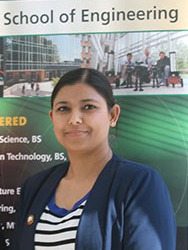
The upcoming STEM series will run throughout September and October and spotlight local government and private sector executives and their insights about the shortage in STEM workers/local pipeline gap. We’ll publish the stories periodically throughout “SeptSTEMber” in Q&A or feature format.
The greater Washington area employs the largest percentage of STEM workers (18.8 percent in Maryland and 16.5 in Virginia, according to a U.S. Census report), suggesting the area depends heavily on STEM competence for its continued sustainability. And while industry and government execs are eager to hire STEM graduates, the number of U.S. high school seniors who are both proficient and interested in STEM lies at a meager 16 percent.
WashingtonExec interviewed Dr. Kamaljeet (Kammy) Sanghera, an Associate Professor of applied information technology and Director of the Volgenau School of Engineering STEM Outreach at George Mason University.
WashingtonExec: When did you become interested in STEM issues?
Dr. Sanghera: When I was teaching a class and there were few females in the class, and the ones who were there were hesitant to speak up, that is when I thought I wanted to help make things different and saw the need for more STEM education.
WashingtonExec: What do you see as the underlying root of this problem?
Dr. Sanghera: Lack of encouragement and lack of role models are big problems. Even though females were in the classes, they didn’t connect classroom with real-world problems. They didn’t see the social relevance.
WashingtonExec: How and where should policymakers be focusing their resources and efforts to augment the pipeline and address the underlying problem?
Dr. Sanghera: Policymakers are the ones who can help schools link STEM to economic prosperity. They can put policy in place to offer more professional development for teachers to address diverse classes. K-12 curriculum needs to be more developed and followed. Computer science is not taught in K-12, and it should be so students will be better prepared when they come to college. Another thing would be stronger partnerships between K-12 and higher education.
WashingtonExec: What challenges do you see currently impeding the path to implementing that solution and making STEM reform a priority in the U.S.?
Dr. Sanghera: Exposure and career development is lacking in high school and middle school. Children see health professions as a potential field of study because they go to the doctor when they are sick or have a check up, but they don’t see computer scientists because we are behind the scenes.
We need extensive research on how students learn.
Just bringing a course to middle school is not enough. There needs to be a way to teach computational thinking across the curriculum, and curricula for younger ages needs to be developed. Often when the computer science teacher leaves there is nobody in place to carry on and little guidance on how to teach computer science.
WashingtonExec: Why do you care?
Dr. Sanghera: I am concerned about the nation’s future. I know that technology can solve many problems and help people live better lives. I know there are jobs that go unfilled because we don’t have enough STEM workers, and I know that we are missing entire segments of our population because lack of opportunity and exposure to STEM.


